There are plenty of 2.4 GHz WiFi modules for IoT project based on processors ranging from Espressif Systems ESP8266 to TI CC3200, or Realtek RTL8710. Some others add Bluetooth 4.2/5.0 such as Espressif Systems ESP32, but it’s much harder to find solutions with dual-band WiFi especially if you have a tight budget for your project or product.
But Realtek RTL8720DN – part of AmebaD family – offers just that with the Arm Cortex-M4/M0 wireless MCU supporting dual-band (2.4/5.0GHz) 802.11 b/g/n WiFi and Bluetooth 5.0 connectivity, and found in modules currently selling for as low as $3.90 or 24 RMB in single units.
B&T BW16 RTL8720DN Module
Specifications:
- Wireless SoC – Realtek RTL8720DN MCU with KM4 Arm Cortex-M4 core @ 200 MHz and KM0 Arm Cortex-M0 core @ 20 MHz
- Connectivity
- WiFi
- 802.11 a/b/g/n WiFi 4
- Frequency Range – 2.412-2.484GHz & 5.180-5.825GHz
- Data Rates
- 802.11a: 6,9,12,18,24,36,48,54Mbps
- 802.11b: 1,2,5.5,11Mbps
- 802.11g: 6,9,12,18,24,36,48,54Mbps
- 802.11n: MCS0–MCS7 @ HT20/HT40 2.4GHz and 5GHz bands
- AP, Station, AP/Client supported
- Bluetooth
- Bluetooth 5.0 LE
- Receiver Sensitivity: -92 dBm
- Transmit Power: 7 dBm
- Antenna – IPEX connector or PCB Antenna
- WiFi
- I/O – 16x castellated holes with GPIO, 2x UART (AT commands + serial), ADC, I2C, SPI, 4x PWM, 3.3V, GND
- Power Supply – 3.3±5% V
- Dimensions – 24 x 16 x 3 mm
- Temperature Range – Operating: -20°C to 85°C; storage: -40°C to 125°C
- Relative Humidity – 10%~90% (non-condensing)
- Certifications – FCC, CE, SRRC, RoHS
The module is sold on Seeed Studio for $3.90, but you’ll also find it for 24 RMB on Taobao ($3.50)
Feasycom FSC-BW236 Module
Another option comes for Feasycom with its FSC-BW236 IoT WiFi module.
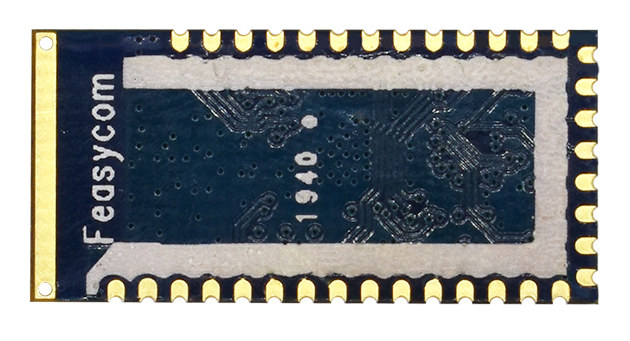
Specifications:
- Wireless SoC – Realtek RTL8720DN MCU with KM4 Arm Cortex-M4 core @ 200 MHz and KM0 Arm Cortex-M0 core @ 20 MHz
- Connectivity
- WiFi
- 802.11 a/b/g/n WiFi 4 up to 180 Mbps
- Tx Power
- 2.4GHz: 17.5dBm (11b), 15.5dBm (11g), 13.5dBm (11n)
- 5GHz: 8dBm (11a)
- TCP, UDP, HTTP, HTTPS, and MQTT protocol
- Bluetooth
- Bluetooth 5.0 LE
- Transmit Power: +8 dBm
- GATT profiles
- PCB Antenna, optional external antenna
- WiFi
- I/O – 36x castellated holes with GPIO, UART, SPI, I2C, USB
- Power Supply – 3.0-3.6V
- Dimensions – 26.9 x 13 mm
- Temperature Range – Operating: -20°C to +85°C; storage: -55°C to +125°C
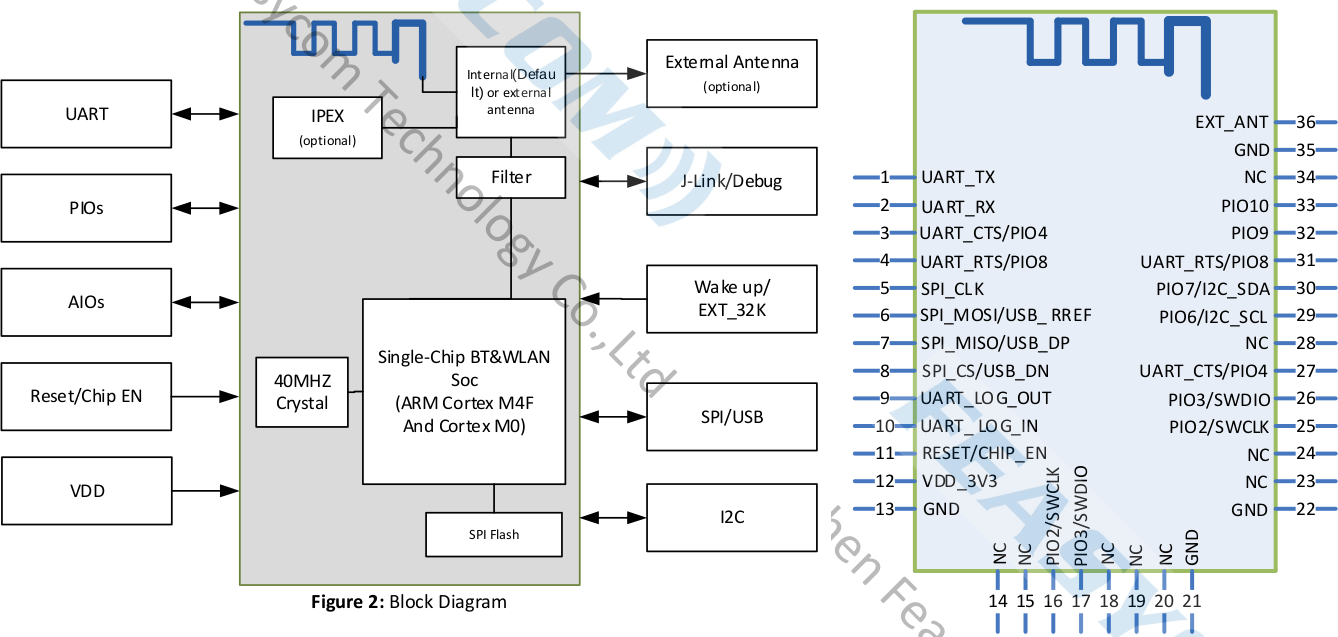
You’ll find more details about the module including a datasheet on the product page. It exposes more I/Os than the B&T module so unsurprisingly it’s a bit more expensive at 40 RMB ($5.8) for a single unit, but the price drops to 30 RMB per piece for orders over 10k.
More details about RTL8720DN WiSoC
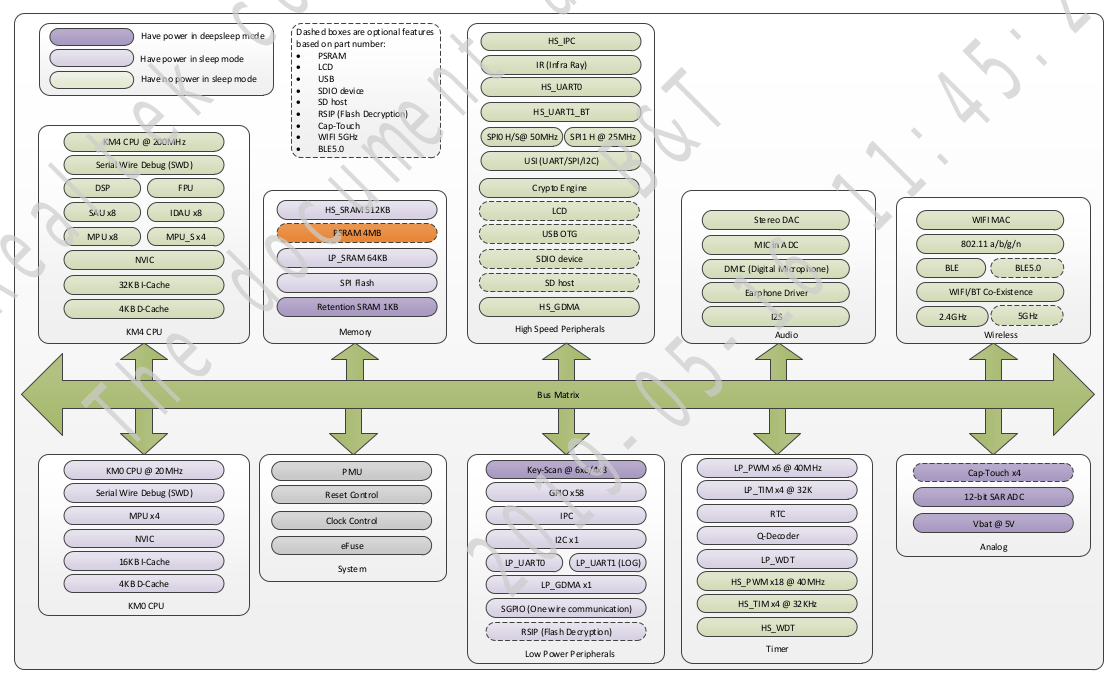
Realtek RTL8720DN is designed for BLE beacons, industrial wireless control, Bluetooth gateways, wearable electronic devices, security ID tags, and smart home products.
Software development is done through Realtek Wi-Fi SDK using the GCC toolchain with the company recommending Windows 7 64-bit (which just got phased out) or Ubuntu 18.04 64-bit for development. The application note shows the SDK is named amebad-sdk, which you’ll find on Realtek Ameba website together with schematics and layout for Ameba RTL8722DM development board. As a side note, the board is sold for $46.90 on Good Display.
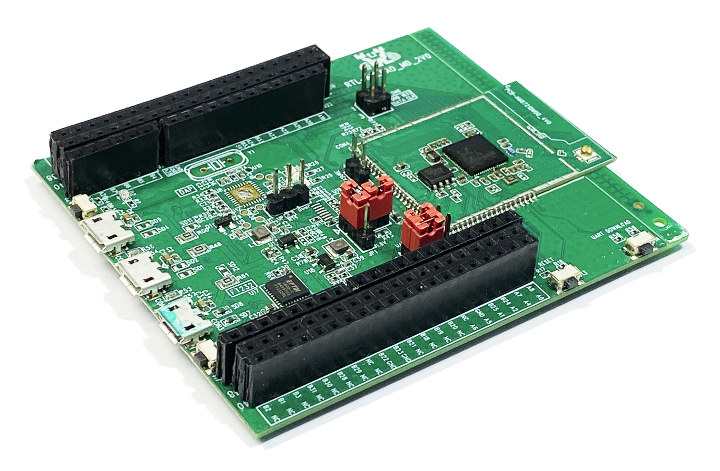
Some Ameba processors are supported by the Arduino IDE, Amazon FreeRTOS, and Arm mbed, but I’m not sure that’s the case for RTL8720DN and other Ameba D processor at this time.
More information about the processor itself can also be found in RTL872xD datasheet.

Jean-Luc started CNX Software in 2010 as a part-time endeavor, before quitting his job as a software engineering manager, and starting to write daily news, and reviews full time later in 2011.
Support CNX Software! Donate via cryptocurrencies, become a Patron on Patreon, or purchase goods on Amazon or Aliexpress


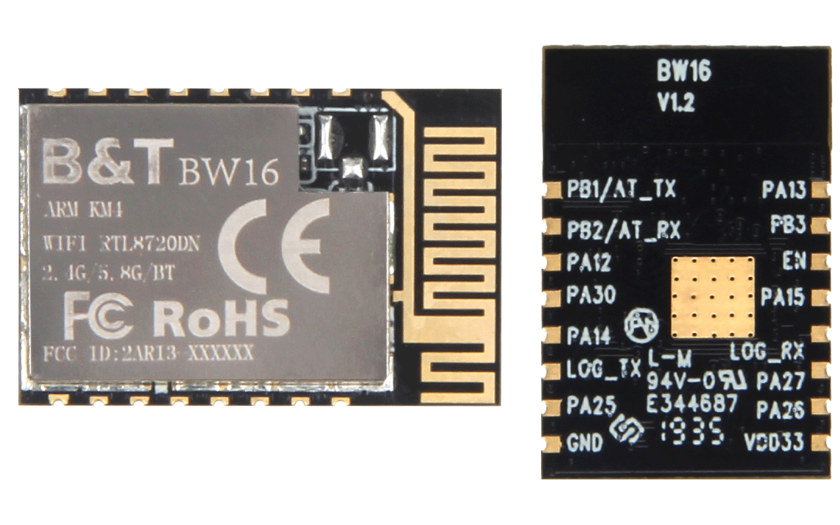



If you need a dual band chip for a product those exist and I don’t think the price is that much different when you factor in that you’ll actually get support for the crappy SDK.
What other dual bands options are you considering? The Wiced stuff is twice the price.
An interesting bit about this chip is that you can run code on it.
https://www.nxp.com/docs/en/fact-sheet/88MW32X-FACT-SHEET.pdf
That is an interesting chip. I hadn’t noticed that NXP bought Marvell and Marvell had previously been totally uncooperative so I wouldn’t buy stuff from them.
It says is has Alexa Voice support. Do you have any more info on that? Which hot word library is it using? There is nothing on the website except for a bullet point.
88MW32x is not dual band, it is 2.4Ghz only. They are calling wifi + BLE “dual band”. That is not dual band, it is dual protocol. Dual band means 5Ghz wifi support.
BT Mesh supported?
Mesh is just software. So, more or less: Yes. You maybe need to write code for it. But I also recommend to use 6LoWPAN over BLE instead. Makes it easier to integrate it with other IP based protocols.
Beautiful $3.90 chip
I’d be interested to know if the device incorporates the BT 5.0 hardware changes (2M raw data rate, Coded long-range PHY)? The data sheet doesn’t say much about it. Perhaps the SDK includes more information?
Also, it seems likely that the RTL8720DN has the 4MB PSRAM included, but I couldn’t find an explicit statement of that. Can anyone confirm?
Thanks!
Hopefully these will get a bit of community love like the 8266. I have a number of projects that need a WiFi interface, but Espressif’s chipset is very noisy around 318MHz, which is where some commercial gate and door openers operate.
The support AFAIK, is crappy. They don’t provide svd files, which means you are bound to use their crappy SDK and GCC. I woud like to use rust and I’m screwed.
This is actually a very nice chip. Unfortunately it is totally ruined by the SDK. I’d classify the SDK in its current state as being unusable. The SDK is here: https://github.com/ambiot/ambd_sdk It looks like Realtek has one or two people assigned to software development for these Ameba chips. What a waste, go through the effort to make this really nice hardware and then don’t allocate sufficient software resources so that a customer can actually use the chip. Plus everything is closed source so there is no way for anyone else to fix things up.
Get a clue Realtek. Espressif put in the software effort and now their company is worth $3B. You didn’t and no one is using these chips.
I have been able to use the B&T BW16 RTL8720DN Module with Arduino after a few modifications. See my github page: https://github.com/mikey60/BW16-RTL8720DN-Module-Arduino for my approach and sample sketches.
I am looking for JTAG interface pins on RTL872xD Wifi module. The datasheet does not show all four JTAG pins (i.e. TMK/TMS/TDI/TDO).
Full size dev boards for these chips are available.
https://www.seeedstudio.com/Ameba-RTL8722DM-IoT-Development-Board-p-4582.html